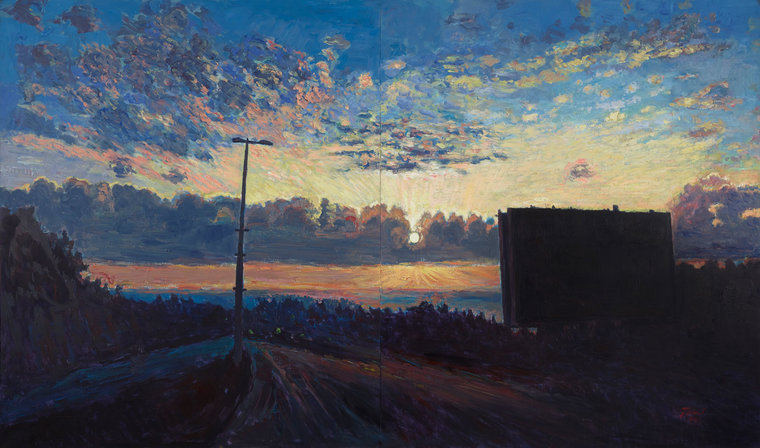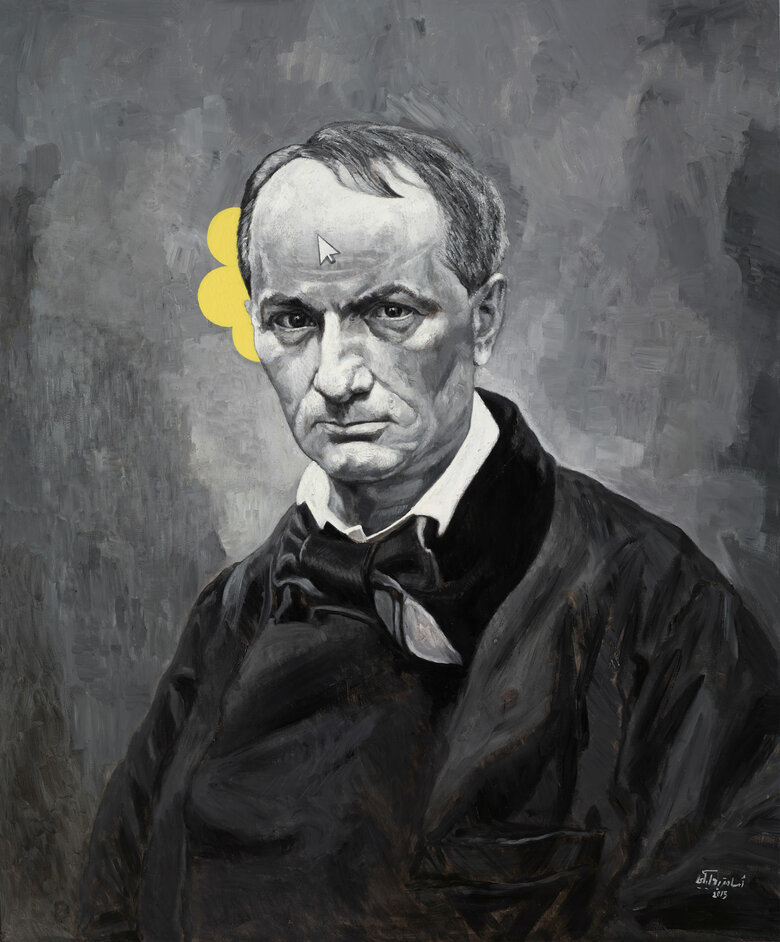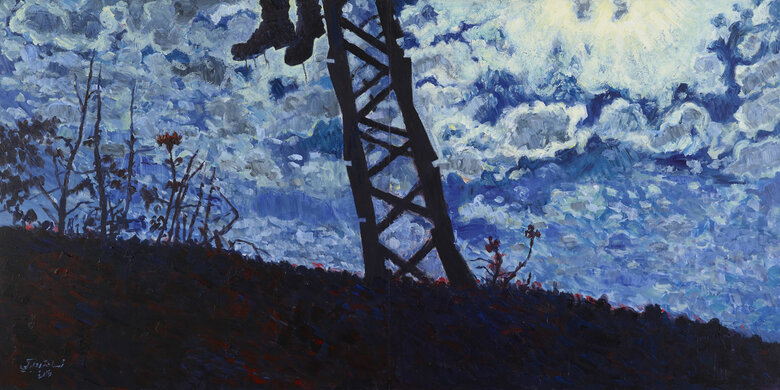The largest of Baalbaki’s landscapes, The Light Parade is made up of two smaller canvases. Each can be read as a single and complete work, but together they form a panorama. The break between the two canvases emphasizes the discontinuity in the surface, reflecting Baalbaki’s distrust of universal truths, and his predilection for the nuances and complexities that live in the space between reality and truth.
Undaunted by contradictions, Baalbaki embraces their presence in our daily lives, and underscores the poetic beauty in them. The Light Parade simultaneously depicts the natural beauty of a sunset along with the often-overlooked manmade elements embedded within every urban vista. The lamppost and the building occupying a significant part of the painting are a testament to the artist’s penchant for realism and yet, Baalbaki’s reality is anything but objective, and always imbued with strong emotional undertones.
Anchored in the artist’s self-professed expressionist realism approach, the traditional subject matter, a city landscape, is transformed into an emotionally evocative, living work of art. Unlike photographs which embalm a moment and trap it within a confined space and time, The Light Parade exudes a sense of movement and slow passage of time. Baalbaki’s characteristic short, thick brush strokes, as well as his choice of a soft yellow, blue and pink color palette, capture the light in all of its gradations, truly making the work of art a parade of light.



-OussamaBaalbaki-Front.jpg)
-OussamaBaalbaki-Front.jpg)
-Front.jpg)
-Front.jpg)





